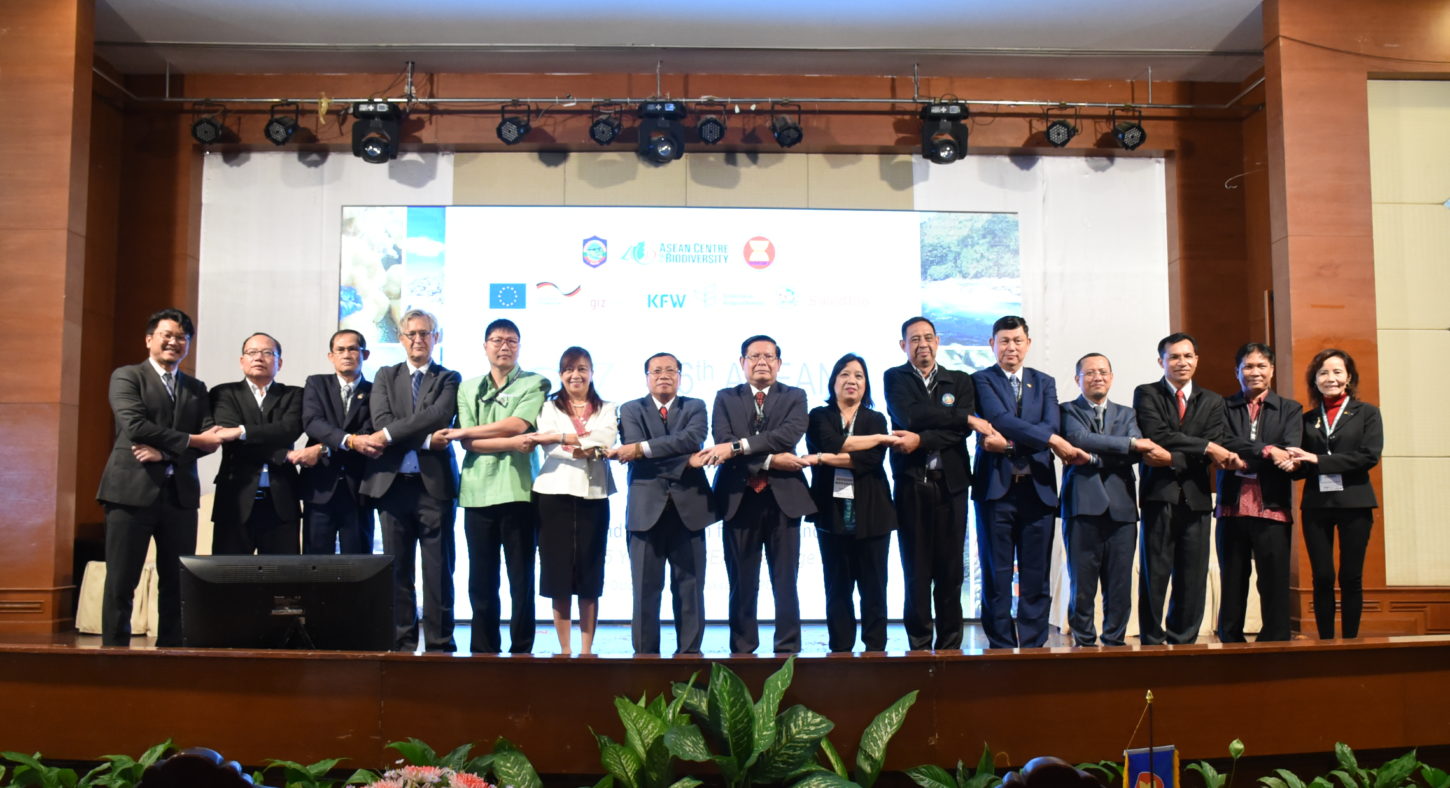ASEAN on track in terrestrial biodiversity, works on other targets

Pakse, Lao PDR – With the deadline set for the global biodiversity targets now 14 months away, the ASEAN region remains on track in meeting its target coverage for terrestrial areas while it continues to work on other priority areas.
In one of the sessions of the Sixth ASEAN Heritage Parks Conference, led by the ASEAN Centre for Biodiversity (ACB) and the Lao PDR’s Department of Forestry under the Ministry of Agriculture and Forestry, Dr. Sheila Vergara, director of the ACB’s Biodiversity Information Management Unit, shared how the ASEAN is faring in achieving the Aichi Target 11.
Aichi Target 11 is one of the 20 targets, which the world has committed to meet through the United Nations’ Convention on Biological Diversity (CBD) and its strategic plan. This calls for the conservation of “at least 17 per cent of terrestrial and inland water areas and 10 per cent of coastal and marine areas, especially areas of particular importance for biodiversity and ecosystem services through effectively and equitably managed, ecologically representative and well-connected systems of protected areas and other effective area-based conservation measures, and integrated into the wider landscape and seascape.”
She said based on the data gathered from ASEAN Member States, the region has placed 16 percent of its terrestrial areas and 3.54 percent of its marine areas under protection.
“With other effective area-based conservation measures (OECMs) added, ASEAN would reach the target for terrestrial protected areas,” Vergara said.
The CBD defines OECM as “a geographically defined area other than a Protected Area, which is governed and managed in ways that achieve positive and sustained long-term outcomes for the in situ conservation of biodiversity, with associated ecosystem services.”
She added that ASEAN must direct efforts to increase the coverage and improve governance of marine protected areas.
Two of the nine recently declared ASEAN Heritage Parks (AHPs) at the 15th ASEAN Ministerial Meeting on the Environment (AMME) are marine protected areas.
Vergara said a recent initiative, the ASEAN Flyway Network will likewise contribute towards the effective management and connectivity of protected areas.
Composed of the 10 ASEAN Member States, the network was mobilised in March 2017 to protect migratory waterbirds and wetlands along the East-Asian Australasian Flyway.
Vergara also cited the need to better document and consider outcomes of conservation actions in ASEAN Member States’ respective national reports and address gaps in communication capacity, policy support, and enforcement of wildlife policies in protected areas.
In a message for AHP6, Cristiana Pașca Palmer, Executive Secretary of the CBD, called for dedicated efforts and continued facilitation in the ASEAN to reverse or halt the decline of biodiversity with 14 months away before the set deadline of the Aichi targets.
“The achievement of Aichi Target 11 will generate multiple benefits for the wellbeing of the society… and make a major contribution towards facilitating sustainable development through poverty alleviation and enhanced economic prosperity, towards a life in harmony with nature at local, national and global levels, not only for the current but also for future generations,” Palmer said in a message delivered by Dr. Sarat Babbu Gida, senior programme management officer of the CBD’s secretariat.
ACB Executive Director Theresa Mundita Lim said that apart from working together to achieve the Aichi targets, the region also has its sights trained on its long-term vision.
“We continue to work fruitfully towards Aichi Biodiversity Target 11 of increasing protected areas with equitable management and also towards the vision of the post-2020 global biodiversity framework “Living in Harmony with Nature,” Lim said.
State parties to the CBD are expected to adopt the new framework during the 15th Conference of the Parties scheduled for October 2020 in Kunming, China.
The four-day AHP6 supported by the European Union (EU), the German Development Cooperation through the KfW and GIZ, SwedBio, Secretariat of the Convention on Biological Diversity, and the Japan Biodiversity Fund concluded on Thursday. Capping off the regional event, the ACB and the ASEAN Secretariat awarded the certificates of the newly declared AHPs.
With theme “Sustainability and Innovation for Parks and People—Celebrating 35 years of ASEAN Heritage Parks,” AHP6 celebrated the 35th anniversary of the AHP Programme, one of the flagship initiatives of the ASEAN. It aimed to build on the experiences and knowledge of protected area managers and international experts in the bid to improve the AHP network and strengthen camaraderie among AHP stakeholders and other dialogue and development partners under the AHP Programme.
#
